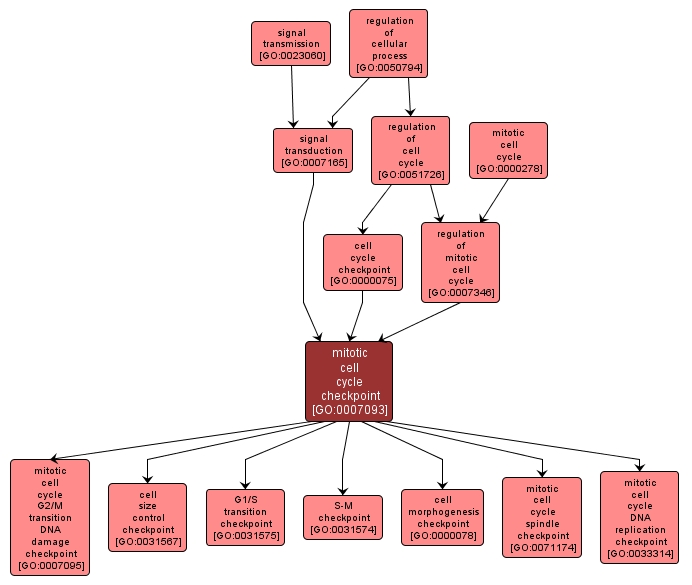GO TERM SUMMARY
|
| Name: |
mitotic cell cycle checkpoint |
| Acc: |
GO:0007093 |
| Aspect: |
Biological Process |
| Desc: |
A signal transduction-based surveillance mechanism that ensures accurate chromosome replication and segregation by preventing progression through a mitotic cell cycle until conditions are suitable for the cell to proceed to the next stage. |
Synonyms:
- mitotic checkpoint
- regulation of mitotic cell cycle by cell cycle checkpoint
|














